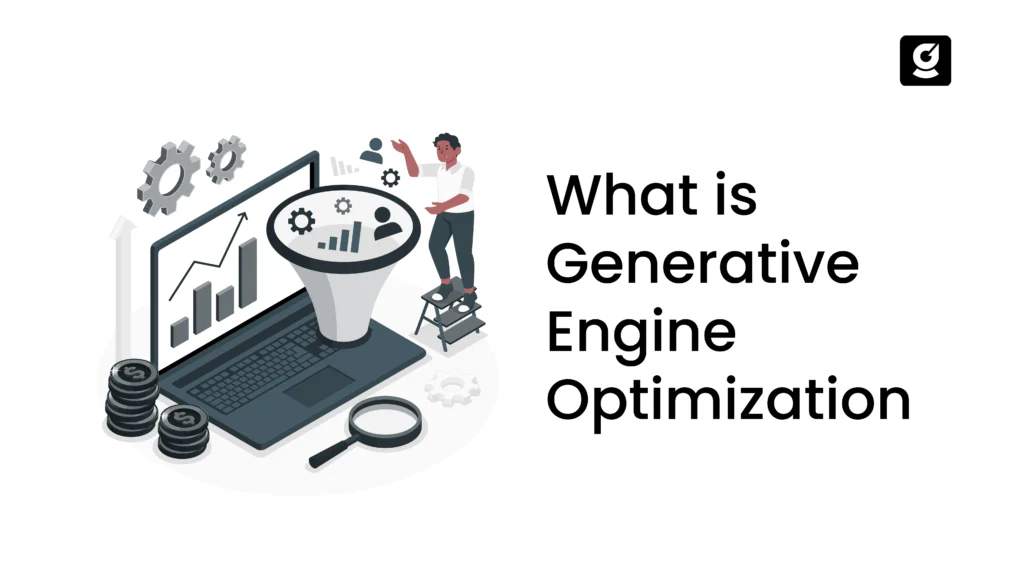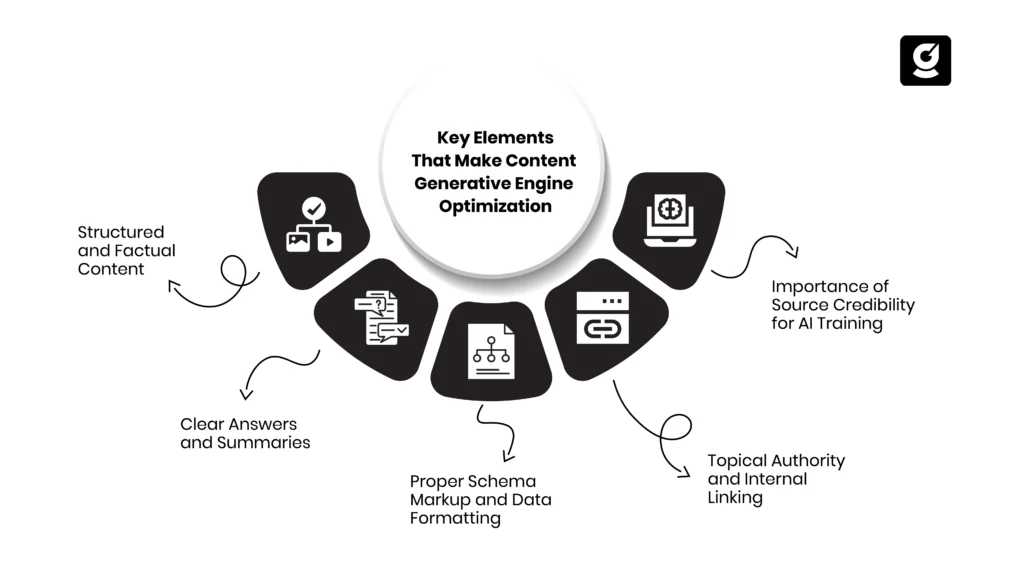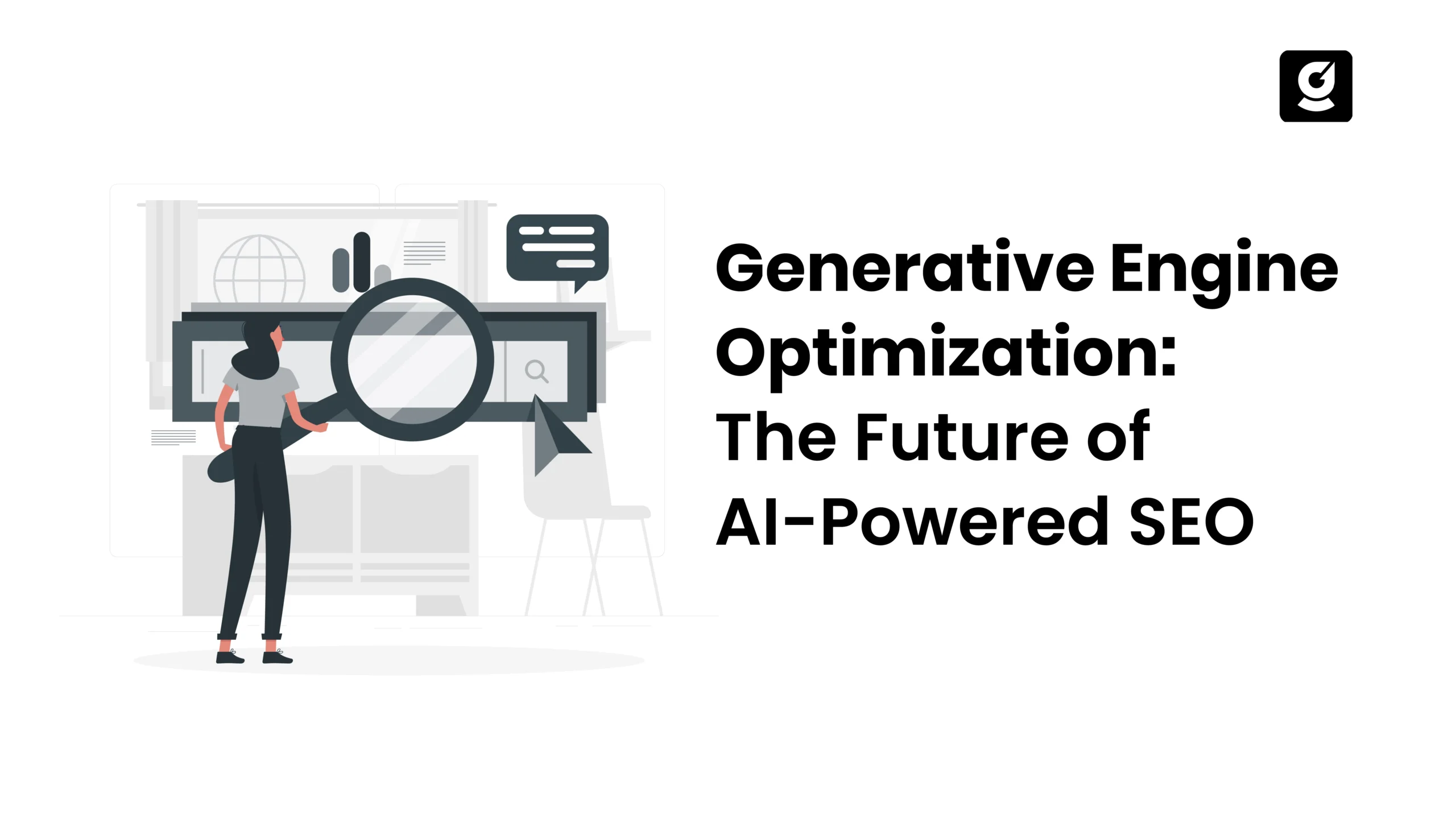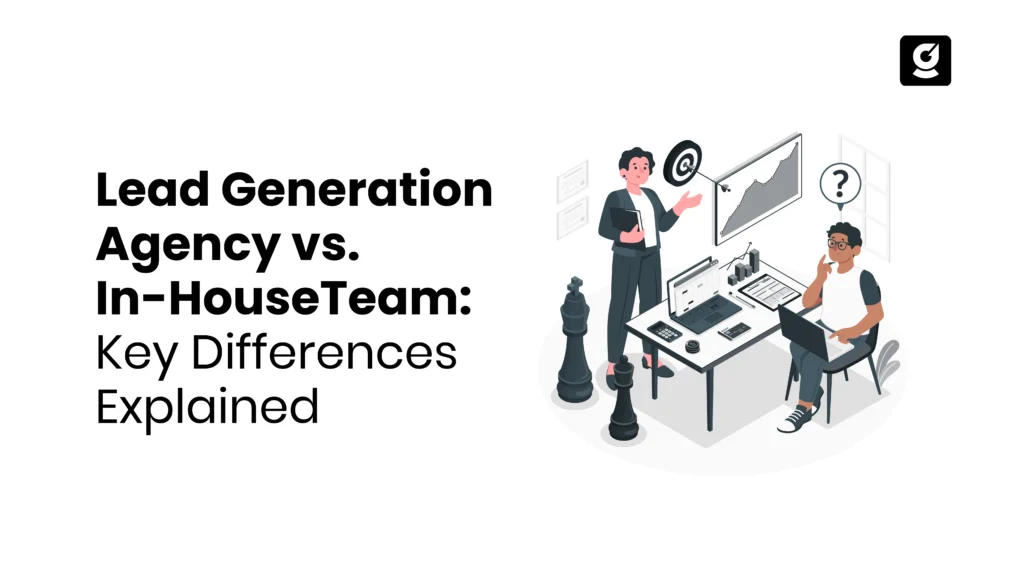The way people search for information is changing. Search engines like Google are no longer the only game in town. AI-powered assistants such as ChatGPT, Gemini, and Perplexity provide instant answers directly to users, bypassing the need to click through search results.
This means traditional SEO strategies are no longer enough for businesses. Enter Generative Engine Optimization (GEO), the next step in SEO evolution. GEO optimizes content for AI-driven systems that generate responses, ensuring your brand is part of the immediate answer.
If you’re still relying solely on old-school SEO, you’re missing out. This guide will explain how GEO works, why it’s crucial for staying ahead, and how to adapt your content marketing strategy for a future where AI engines do the heavy lifting in content discovery.
What is Generative Optimization?

Generative Engine Optimization is a strategy designed to optimize content for AI-driven search engines, which generate direct answers to user queries. Unlike traditional search engines, which rank web pages based on relevance to search queries, generative engines like ChatGPT and Perplexity aim to provide users with immediate, contextually relevant answers by pulling information from various sources. GEO ensures your content is structured, making it accessible and valuable for these AI systems.
How GEO Differs from Traditional SEO
Focus Shift:
- Traditional SEO focuses on ranking web pages for specific keywords to drive traffic to your site. It means optimizing for search engines like Google and Bing through keyword optimization, backlinks, and on-page SEO techniques.
- GEO, however, focuses on making content for saas businesses readable and usable for AI engines that generate user answers. It’s not just about showing up in a list of search results; it’s about providing information that AI can use to produce answers directly in response to a user’s question.
Content Structure:
- Traditional SEO relies on keywords and meta tags to make content discoverable to search engine crawlers. Businesses must optimize the content to rank well for specific search terms.
- GEO requires content to be clear, factually accurate, and well-structured, allowing AI engines to pull data from it and produce coherent, relevant answers. Instead of focusing solely on keywords, GEO optimizes for meaning, clarity, and intent, ensuring that generative engines can understand and extract the correct information.
How GEO Optimizes Content for AI Engines
Answer-Driven Content:
- GEO encourages content written to answer user queries directly. Instead of discussing a topic broadly, GEO ensures that the content directly responds to specific questions, which is what generative engines look for.
- It uses formats like lists, FAQs, and step-by-step guides to present the information in bite-sized, digestible pieces that AI can quickly process.
Fact-Based Structure:
- Generative engines prioritize factual accuracy. AI tools are more likely to select content grounded in data, statistics, and verifiable facts when generating answers.
- Including sources, citing reputable references, and organizing content in a way that’s easy to verify increases the chances of using the content in AI-generated responses.
Clear Formatting:
- Content needs to be structured clearly and logically. It includes using headings, bullet points, and tables to break up complex information and present it in a format that AI engines can parse efficiently.
- Structured data, such as schema markup and rich snippets, also plays a crucial role in helping AI engines understand the content and retrieve it accurately when generating responses.
Real-World Examples
Perplexity:
- This AI tool helps users by providing immediate, direct answers to their queries by sourcing information from highly structured and fact-based content. It doesn’t show search results but delivers the answer directly, pulling from content optimized for clarity and factual accuracy.
- Example: A user asks, “What is the capital of France?” Perplexity pulls from well-structured articles or data sources that directly answer the query without requiring the user to visit a website.
ChatGPT:
- ChatGPT generates responses by pulling from content structured in a way that allows it to provide clear, accurate answers. It doesn’t just search for keywords but understands the context and meaning behind the content, making it ideal for generating responses.
- Example: When asked a question about a specific business strategy, ChatGPT will provide a detailed response based on structured content, answering the question as if it’s a conversation rather than simply listing links.
You.com:
- You.com offers a unique search experience where users get answers directly from AI, drawn from content optimized for generative engines. It emphasizes providing concise answers rather than showing a list of website development.
- Example: When searching for a product review, You.com can generate a summary directly from the content, pulling from structured reviews and providing the user with an immediate answer.
5 Key Elements That Make Content GEO-Friendly & How does AI impact SEO?

AI transforms how search engines understand and rank content, especially with the rise of generative engine optimization (GEO), which focuses on key elements that enhance how AI systems process and generate responses from your content.
This shift means content must be optimized for traditional algorithms and AI-driven models that influence visibility and engagement.
1. Structured and Factual Content
Organize your content into clearly defined sections with headings, subheadings, and bullet points. It makes it easier for AI engines to extract and present relevant information. Additionally, ensure the content is fact-based and well-researched, as AI systems prioritize accuracy.
2. Clear Answers and Summaries
Generative engines provide direct answers to user queries. Content directly addressing common questions or providing concise summaries is more likely to be selected. Aim to format content to answer questions up front, followed by supporting details.
3. Proper Schema Markup and Data Formatting
Using schema markup helps AI engines better understand the context of your content. It allows you to organize important information in a structured format that AI tools can interpret and use more effectively.
4. Topical Authority and Internal Linking
Demonstrating expertise on a subject is key for both human readers and AI. Regularly link to other relevant pages within your content to create a network of authoritative information that AI can reference for context and reliability.
5. Importance of Source Credibility for AI Training
AI engines rely on credible sources to generate reliable responses. Citing reputable, authoritative sources boosts your content’s credibility and increases the likelihood of being generated by generative systems.
Why GEO Matters More Than Ever in 2025 and Beyond
As search behavior evolves, Generative Engine Optimization ensures content remains visible and accessible in an AI-driven landscape.
Decline in Traditional Link-Based Search Traffic:
- Shift away from link-focused strategies: Backlinks, once a dominant SEO factor, are becoming less impactful as search engines evolve.
- Direct answers from AI tools: Users are less likely to click multiple links to get the necessary information.
- Need for alternative optimization: GEO ensures content is optimized for AI engines rather than just search engines, increasing visibility.
Rise of Zero-Click Answers and AI Summaries:
- Instant answers on search results: More search queries return direct answers on the search page, eliminating the need for users to visit websites.
- Content formatting matters: AI is more likely to pull structured, concise content marketing for zero-click responses.
- Better engagement: GEO ensures your content appears in these summarized responses, improving your chances of being seen.
Impact on Content Discovery and Customer Journeys:
- Change in user expectations: Customers now expect quick answers without clicking through to other pages.
- Seamless experiences: GEO ensures your content is discoverable within AI systems, improving the customer journey.
- Direct responses: By optimizing for GEO, businesses make their content available directly in the answers users want.
Increasing Use of AI Search in B2B and B2C Buying Behavior:
- AI search adoption in businesses: B2B buyers increasingly rely on AI-driven product and service research tools.
- Faster decision-making: With quick, AI-generated responses, customers move through the buying journey more efficiently.
- Positioning for success: GEO ensures your SaaS content is optimized for AI-based search, keeping your brand visible in both B2B and B2C decision-making processes.
How growth.cx is Helping Brands Adapt to GEO
Growth.cx is a next-gen content and SEO platform designed to help businesses stay ahead in the evolving digital landscape. With the rise of Generative Engine Optimization (GEO), growth.cx empowers brands to optimize their content for AI-driven search engines, ensuring visibility and relevance in a world where traditional SEO strategies are no longer enough.
Creating Structured, AI-Ready Content:
- Clear Formatting: growth.cx encourages using headings, subheadings, bullet points, and numbered lists to make content easy to scan and understand.
- Factual and Concise: Content is optimized for clarity, making extracting accurate information easier for AI systems.
- Answer-Oriented: growth.cx helps businesses craft a saas website design and content that directly answers common questions, increasing the likelihood of AI-generated responses.
Auditing Existing Pages for GEO Compliance:
- Content Review: Growth.cx scans existing web pages for generative engine optimization, checking structure, accuracy, and clarity.
- GEO Best Practices: The platform evaluates whether pages meet the requirements for AI engines, such as clear data presentation and proper citations.
- Actionable Insights: Provides businesses with a list of necessary adjustments to enhance their content’s relevance for generative search engines.
Measuring Visibility Across Generative Search Platforms:
- Performance Tracking: growth.cx offers performance marketing, showing how well content performs on AI-driven platforms like ChatGPT, Perplexity, and Gemini.
- Visibility Metrics: The platform provides visibility scores to track content’s reach and effectiveness in generating answers for user queries.
- Optimizing Content: Actionable data on which content performs best, allowing businesses to refine and optimize their content strategy.
growth.cx has already helped businesses in various sectors improve their SEO and content strategies for GEO. Early adopters have seen improvements in content discoverability through AI platforms like ChatGPT and Perplexity.
Start optimizing for GEO today with growth.cx – before your competitors do.
What the Future Holds: From GEO to AI Discovery Engines
As Generative Engine Optimization (GEO) continues to reshape digital search, the future will shift toward AI-driven discovery engines. Here are the trends to watch:
AI-Powered Recommendation Engines:
- AI tools increasingly suggest content based on user preferences, behavior, and contextual relevance, not just keyword searches.
- Personalized Content: Ensure your content is adaptable and personalized, so it resonates with diverse audiences across multiple platforms.
Voice Search:
- With the rise of voice assistants, optimizing saas content marketing for voice queries becomes essential.
- Natural Language: Focus on conversational, clear, and concise answers that users expect when speaking into devices.
Multimodal Assistants:
- AI systems are evolving to simultaneously process and present information through text, voice, images, and video.
- Content Adaptability: Ensure your content is adaptable to various formats and media types.
Adapting Your Content Strategy for Multi-Channel AI Discovery
Diversify Content Formats: Optimize for text, audio, and visual content, ensuring visibility across multiple channels.
Shift Your Mindset: Aim not just to “rank” in search results but to be the first choice for generating relevant, accurate answers.
Conclusion: Time to Rethink Your SEO Strategy
The shift from traditional SEO to Generative Engine Optimization is inevitable. SEO once focused primarily on ranking websites through keyword optimization and backlinks. Today, GEO emphasizes optimizing content for AI systems that generate direct user answers.
Marketers must adapt by creating structured, answer-driven content across multiple channels, including AI tools and recommendation engines. By doing so, businesses can ensure their saas content remains discoverable in an evolving digital landscape.
Future-proofing your content strategy is essential for staying competitive. As AI-driven search engines increase prominence, those who embrace GEO will be better positioned to lead in their industry.
Struggling to Keep Up with Changing Search Trends? Book a call with growth.cx to see where your brand stands on the GEO curve and begin optimizing your content for the future.




